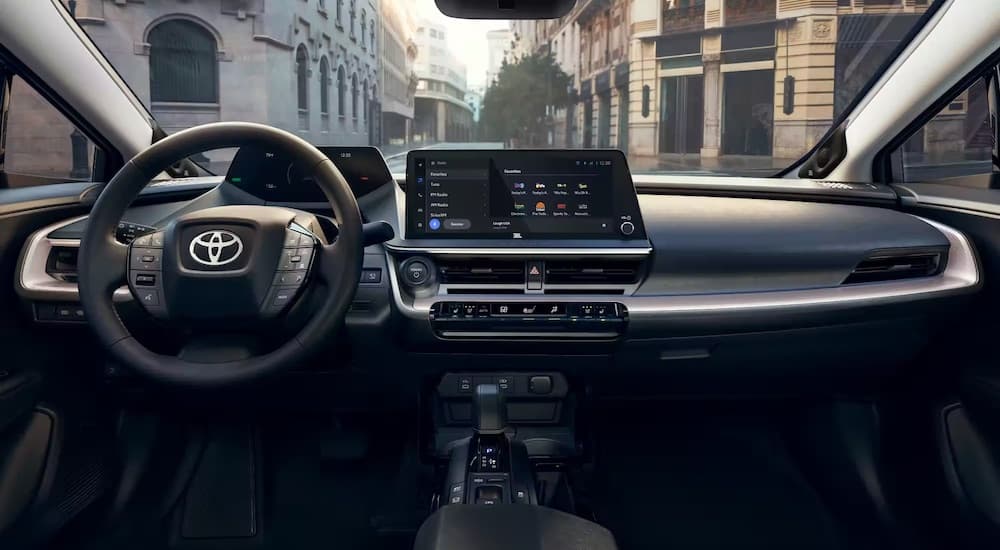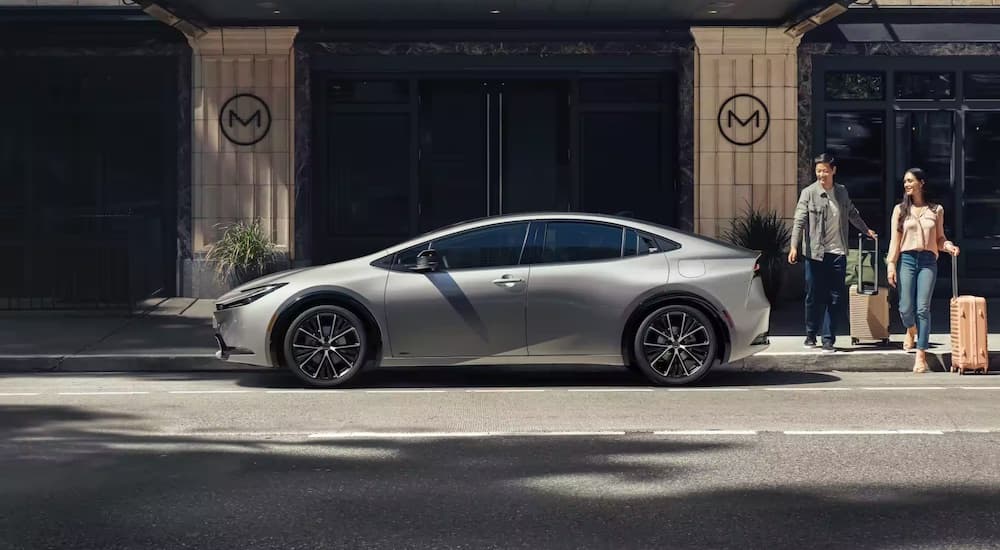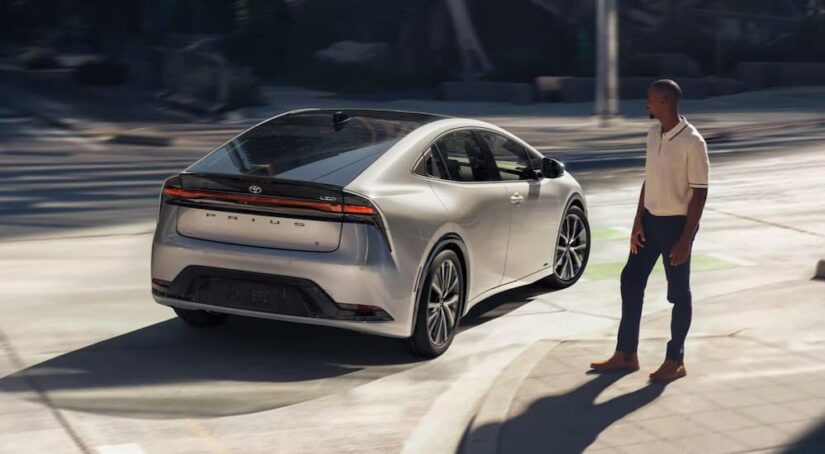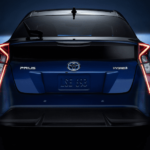There are a few foolproof ways to save money. You can place your money into a savings account with decent interest, you could set $25 aside every week from your paycheck, or you could find a Toyota Prius for sale. Each of these options saves you money in the long run.
The problem is, there’s nothing fun about storing your money in a bank account, and the enjoyment of saving $1,300 a year by incrementally stashing away parts of your paycheck doesn’t bear any fruit until a year or so has passed. Not to mention, what if you need a vehicle? Many of us need vehicles; it’s the way things have been for a century, and until we take to the skies in jetpacks, that’s the way it’ll stay. So, if saving money is important to you, then listen up because I plan to show you how the Toyota Prius will save you money.
A Familiar Name for a Familiar Car
There’s not much secret to this one if you know anything about the Prius or its origins. The Toyota Prius has the distinction of being the first consumer-grade hybrid vehicle, which at the time was a feat that other manufacturers scrambled to achieve with varying degrees of success. The bright side was that, if a manufacturer botched their hybrid design, you had a nice fire for roasting marshmallows.
Jokes aside, the Toyota Prius was launched in 1997—but only in Japan. Given the lower population of Japan, the first batches of the Prius would lay the foundation for its introduction in Western markets in 1999, and the Prius quickly established itself as the paramount hybrid vehicle—and then it became a pop-culture icon.
Whether cartoons like Family Guy were poking fun at the family dog Brian for driving a Prius in the name of a political statement, or the vehicle being labeled as a mundane ride for mundane folk—as hinted by comedy films like The Other Guys with Will Ferrell and Mark Wahlberg—that’s no longer the case. Today, you’d be surprised to find that even the more hard-to-convince crowds from years past are becoming more familiar with the idea of hybrids, mostly in attempts to save money—and usually successfully. Those who switched to hybrids have the Prius to thank for the overarching influence it planted in the industry, even if the vehicle they buy isn’t a Prius—that’s how influential it has been.

Hybrids (AKA the Best of Both Worlds)
Driving a hybrid like the Prius gives you the best of both worlds. Although many drivers have begun warming up to the idea of owning a hybrid, that’s not to say these same drivers are interested in fully-electric vehicles that eschew combustion engines. Hybrids give you the best of both worlds because you aren’t relying solely on the engine for powering your vehicle, but you’ll have the assistance of a battery to lengthen your travel range, too—and, unlike plug-in hybrids or EVs, you don’t need to plug in the Prius.
For those who are unfamiliar with hybrids, you may be wondering how the battery charges if it’s not a plug-in. In a traditional hybrid, the battery linked to the engine receives power via the beauty of science and a funny little thing called ‘kinetic energy,’ the energy created by your forward movement. Imagine kicking your legs in a pool; that motion creates kinetic energy. In hybrid vehicles, the kinetic energy of your motion is captured in the brakes when using features like One Pedal Driving, and that energy is redirected to your battery and recycled into fresh juice.
The 2023 Prius has a new feature that assists with this regenerative braking thanks to the inclusion of Toyota Safety Sense 3.0, the long-awaited follow-up to Toyota Safety Sense 2.5+. With Toyota Safety Sense 3.0, the Toyota Prius has a new feature called Proactive Driving Assist, which is a new form of assistive driving not unlike what you’ve seen other manufacturers doing, including pricey heavy-hitters like Tesla. This feature can provide braking input around corners and avoid obstructions like pedestrians, with the former assisting in transferring energy to the battery. How does all of this translate into the real world? Is the Prius worth your money? Let’s dive deeper…
How Does the Prius Perform?
Toyota made some changes to the Prius once the 2023 model came out, which somewhat separated the Prius into two categories: models before 2023 and models in and after 2023. The change was due to a new powertrain, which saw the former 1.8L I-4 engine paired with a Continuously Variable Automatic Transmission (CVT) be replaced by a slightly more capacious 2.0L I-4 engine paired with an Electronically Controlled Continuously Variable Automatic Transmission (eCVT). To the chagrin of critics hoping to put the Prius on blast for a botched attempt at reinvigorating its name, Toyota has made changes to the Prius that have placed it on the radar of more drivers than ever before.
A great indication of how the newer Prius’s performance translates into the real world is to look at the updated horsepower ratings. The 2023 Prius saw a jump in strength, from 121 hp in the 2022 model and its predecessors to 196 hp in the 2023 model and beyond—a 62% uptick. With a mind-boggling two-thirds boost in horsepower, some wondered if this would harm the Prius’ performance, but you’ll be pleased to know it’s not only comparable to the less performant Prius models of yesteryear regarding fuel efficiency, but it even surpasses them in five out of six fuel economy tests.
That’s right, the 2.0L I-4 engine that newer Prius models boast gets 53 MPG in the city and 54 MPG on the highway (for 54 MPG combined) with all-wheel drive, while the 2022 Prius with AWD achieved 51 MPG in the city and 47 MPG on the highway (for 49 MPG combined). Highway mileage with full-wheel drive is better on the newer engine, getting you 56 MPG instead of 53 MPG, along with 57 MPG combined over the older engine’s 56 MPG combined. The one outlier is city mileage, which saw a slight decrease to 57 MPG instead of the 58 MPG of the year prior—and what does this tell you? Let’s wrap up this discussion with our thesis question…

Does the Prius Save You Enough Money to Be Worth the Investment?
The Prius has plenty to offer, and with the release of the 2023 model and its sequential iterations, it now has the one thing some people thought was sorely lacking: power. Now, it has that in spades, not to mention all its cutting-edge interior tech.
The Prius is worth your money, sure, but does it also save you enough money in the long run? The answer is a resounding yes. The fuel economy ratings can be taken at face value as proof that, if you want to wring every inch out of every drop of fuel, you should buy a hybrid as well-equipped as the Prius. Even if you’re just window shopping and exploring what the world of hybrids has to offer, start your search at the Prius, just like the market did all those years ago.



